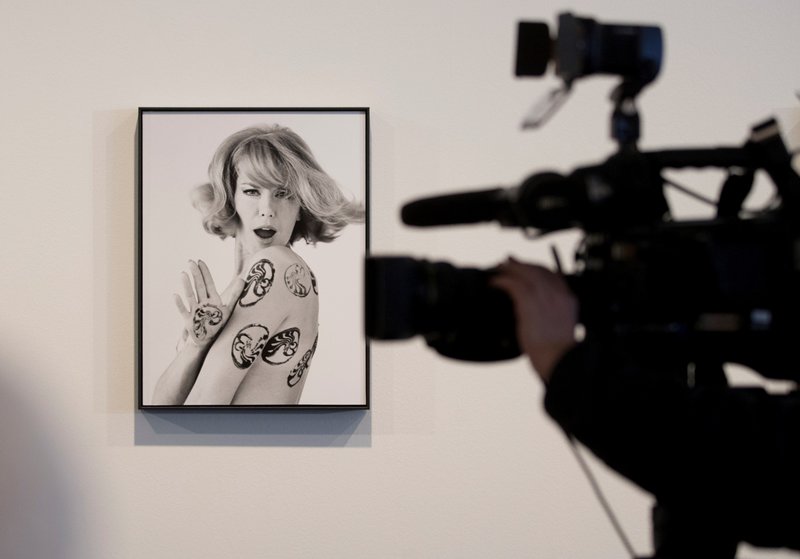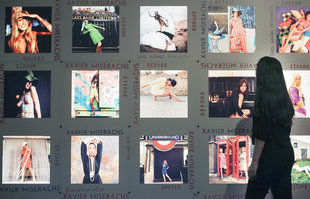Miserachs in colour
La Pedrera presents a new retrospective of the great Catalan photographer in an exhibition that goes far beyond his most recognised use of black and white
Xavier Miserachs (1937-1998) said that a good photograph is the one that touches the soul. He also put it another way: a good photograph is a rarity, a small, bright drop in an ocean filled with dull images. He took more than 80,000 photographs from the time he was 17, when he first showed his modern style, something which the Franco regime attempted to limit as much as possible, entering the competition for the new Agrupació Fotogràfica prize, which he won, until his untimely death, at 61. Miserachs remained ever faithful to the maxim that the camera should reach wherever the eye could not. It is in the contact sheets of his enormous archive his daughters Mar and Arena donated to MACBA in 2011, that we find the key to understanding how to spot the exceptional photograph. To rank them, he circled each with a marker and reframed them to give more life to what it was he wanted us to see, and to eliminate what he did not.
Photography historian and curator Laure Terré has not tried to invent a new photographer, but rather to respect his vision in the exhibition that recently opened to the public at La Pedrera, Epíleg imprevist (until July 15), consists of 154 scrupulously selected images, with even those not seen before epitomising his way of seeing and doing. The curator has made sure his work is represented in all of the fields he worked in, and that is all encompassing: editorial, fashion, publishing ... and not simply those most recognised or known. “Miserachs was very versatile and cannot be simplified,” warns Terré, who defines his genius as a confidant “of the depth of the simple things in life.”
And for the first time in an uninhibited approach to his work in which his colour photographs take pride of place; work too often ignored even in the anthology that was organised 25 years ago, at the end of his life. The photographer himself was at a loss to understand how it is that this area of his work attracted such little attention. So, here we are able to discover and appreciate a Miserachs that moved to colour when he joined the magazine in 1968, and one of his first assignments was to cover the revolt of Paris in that same year. Terré invites us to observe these images with all their Baroque grandeur. “They are synthetic; there is a lot of information,” she warns.
Rest assured that Miserachs in black and white is also present in the exhibition. The iconic works are all there: the young man throwing flowers to a girl on Via Laietana, the worker in the Born market balancing a stack of boxes that look as if they would come crashing down with the slightest gust of wind, a stunning Teresa Gimpera with the Bocaccio logo tattooed on her skin ... this is Miserachs’ Barcelona. His book Blanc i Negre (1964), a masterpiece of photographic publishing, the legendary photographs of streets where it seems as if nothing is happening and yet everything is happening; the Miserachs of the Costa Brava Show (1966), in the eyes of someone witnessing and living the last days of paradise, there is more and it takes on new meaning which confirms him as an eternal artist with work filled with contemporary life.
The exhibition is presented in a way so that it combines personal details and the conceptual complicity of the creator, such as the mixture of different formats and sizes, frames without protective glass exactly as he liked to exhibit all his photographs, as he abhorred the exhibition protocols of the plastics arts. Photography is something else, Terré repeats over and over again. Terré herself is the daughter of photographer Ricard Terré, who had a similar vision to that of his great friend Miserachs. Chance would have it that both photographers had debut exhibitions in adjoining rooms in Aixalà in 1961 along with another heavyweight, Ramon Masats.
As well as playing jester to himself, Miserachs theorised much about photography, something that Terré wants to emphasise in the exhibition. “He is the photographer writer,” she says, to distinguish him from his generation. His legacy is telling: three books including his memories and an almost biblical exposé of the trade-secrets of his craft that should never be passed over by anyone wishing to ply the trade. Fragments of his writings are spread across the walls of La Pedrera and are fully in keeping with the images. The same joy of living, the same humour, the same tenderness, the same critical view of the preconceived; in the same way he created his images, he wrote.
When the Miserachs family visited the exhibition before it opened, his daughters were pleased. Nothing to do at all with the disappointment caused by MACBA’s daring proposal in its exhibition in 2015, in which his images were transformed into figures meshed into the garish pink and blue background. In La Pedrera the colours touch the soul.
art






